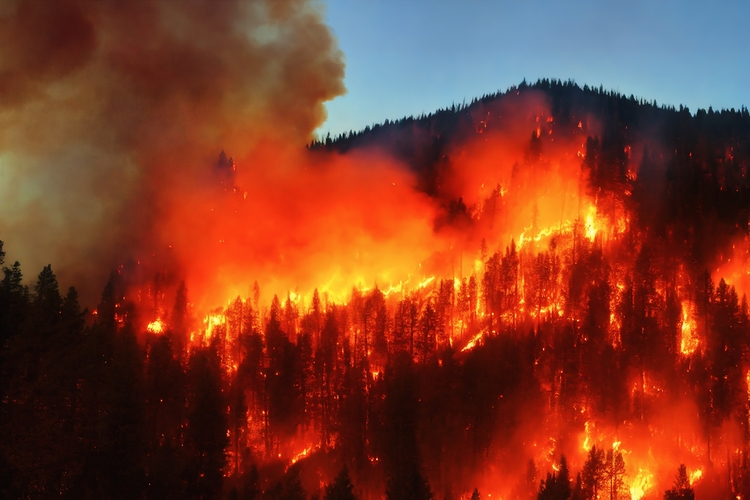
Extreme wildfires emitted more than eight billion tonnes of carbon dioxide during the 2024–2025 fire season
By
Between March 2024 and February 2025, global wildfires burned through an area at least 3.7 million square kilometres in size – an area larger than India – according to research from a team of international scientists.
The figure marks a ten per cent decrease in the average annual area burned in the past two decades. However, due to an increase in wildfires occurring in carbon-rich forests, the CO2 emissions resulting from these fires were almost ten per cent above average.
Enjoying this article? Check out our related reads…
One study author explains that such a trend is indicative of a scenario in which we will experience ‘increasing extent and severity of fire in global forests, which are carbon-rich’, in comparison to fires in less carbon-rich grassland biomes.
The greatest increases in burned area and carbon emissions during the wildfire season were in Canada’s boreal forests, the moist tropical forests in the Amazon region, the Chiquitano dry forests of Bolivia and the Cerrado – a tropical savannah in central Brazil.
The latest report also highlights four of the most significant extreme wildfire events between 2024 and 2205: north-east Amazonia; South America’s Pantanal-Chiquitano region; the Congo basin and southern California.
According to their report, in some cases, the area burned by these fires was 25–35 times larger because of global warming.
What about individual countries?
In particular, North America was impacted by what researchers dubbed an ‘extreme’ fire year. Both total burned area and carbon emissions reached their second-highest levels since records began. Across the entire continent, the burned area was 35 per cent higher than the average, and carbon emissions were more than double the average figures.
In Canada, the wildfire season started early in 2024 due to a range of factors, from earlier than normal snowmelt to multiyear drought.
In the US, more than 64,000 individual wildfires burned through an area exceeding 36,000 square kilometres. More than 8,000 wildfires in Mexico led to 16,500 square kilometres of burned land.
Back in 2024, the US was also home to one of the most expensive wildfires ever recorded – those which broke out in Los Angeles. The two largest fires, named the Palisades fire and the Eaton fire, led to at least 30 deaths, the destruction of more than 11,500 homes and the evacuation of more than 153,000 people. Such fires resulted in estimated economic losses of $140billion.
South America also experienced extremely high levels of wildfires during the 2024–2025 fire season. Collectively, wildfires burned through 120,000 square kilometres of land – 35 per cent higher than average – and contributed to the release of 263 megatons of carbon, the highest carbon emissions on record for the continent.
The scale of fires was well below average in Africa, excluding areas such as the Congo Basin, northern Angola and South Africa.
In 2024, a record high amount of land was burned by around 4,000 wildfires in the Congo Basin, a region famed for holding the world’s second-largest tropical rainforest. This burned area was 28 per cent higher than the annual average. Fires also led to ‘hazardous’ air pollution and led to the Congo Basin’s highest loss of primary forest in a decade.



